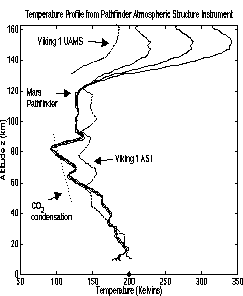Temperatures of the Martian atmosphere as deduced by Mars Pathfinder.
Click on image for full size
Courtesy of NASA.
Mars Atmospheric Temperature Profile, from Mars Pathfinder
The temperatures in the atmosphere of Mars are doggone cold! This is a graph which shows the temperatures measured in the atmosphere by Mars Pathfinder as it decended through the nighttime air and landed on the surface. The temperature of the atmosphere is listed on the bottom of the graph, and the altitudes where the temperatures are found within the atmosphere are listed along the leftmost edge. The graph shows that near the surface where Pathfinder landed (at night) the temperature was 170 oK (-150 F), in the middle of the atmosphere the temperature got a lot colder, at 70 oK (-333 F), and at the uppermost reaches of the atmosphere the temperatures ranged from 150 to 300 oK (-190 to 80 F). This region of the atmosphere is called the ionosphere, or sometimes the exosphere. It is the region of the atmosphere closest to space, and is the one which is first exposed to the sun's rays.
Compare the temperatures in these different regions of the atmosphere to those of Jupiter, Saturn, and Uranus.
You might also be interested in:
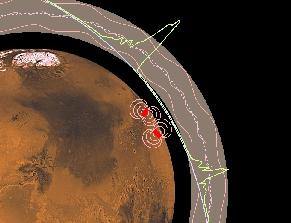
The Martian ionosphere is a layer of gas that is very high up above Mars and is composed of ions and electrons. It extends from about 75 miles up to several hundred miles up above the surface. It is shown
...more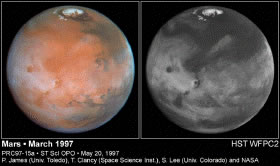
Unlike the Earth, where clouds are found around the entire globe, on Mars, clouds seem to be plentiful only in the equatorial region, as shown in this Hubble telescope image. This may be because water
...more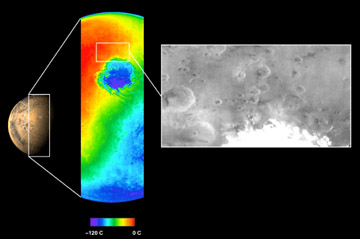
The Mars Odyssey was launched April 7, 2001, from Florida. After a six-month, 285 million-mile journey, the Odyssey arrived at Mars on October 24, 2001. The Odyssey is in its aerobraking phase right now.
...more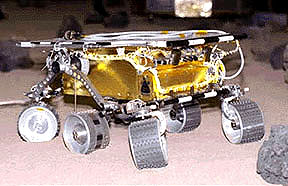
The Mars 2005 mission is still in the planning stages. It is set to launch in the year 2005.
...more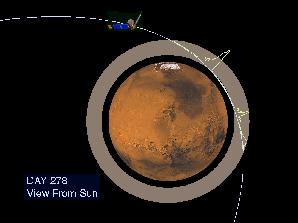
The Mars Global Surveyor reached Mars in September of 1997. But it didn't make it into its final mapping orbit until February 1999. What took so long? Surveyor needed to reach a near-circular, low-altitude
...more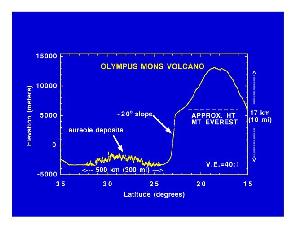
Mars Global Surveyor carries an instrument which measures the heights of things. This instrument is called an altimeter, or "altitude-meter". The graph to the left shows the results returned from Mars
...more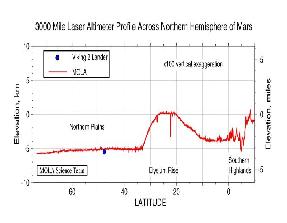
Mars Global Surveyor carries an instrument which measures the heights of things. This instrument is called an altimeter, or "altitude-meter". The picture to the left shows Mars Global Surveyor's measurement
...more


